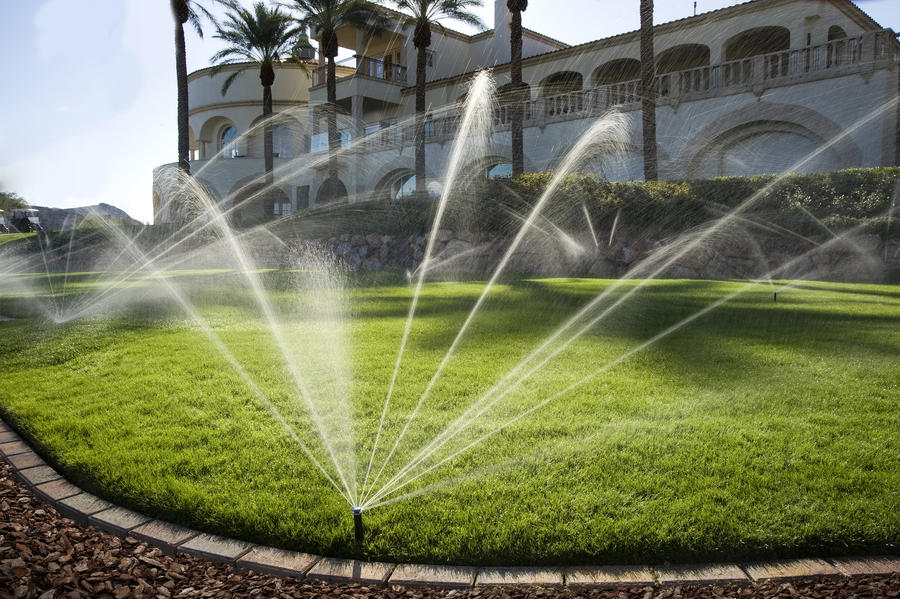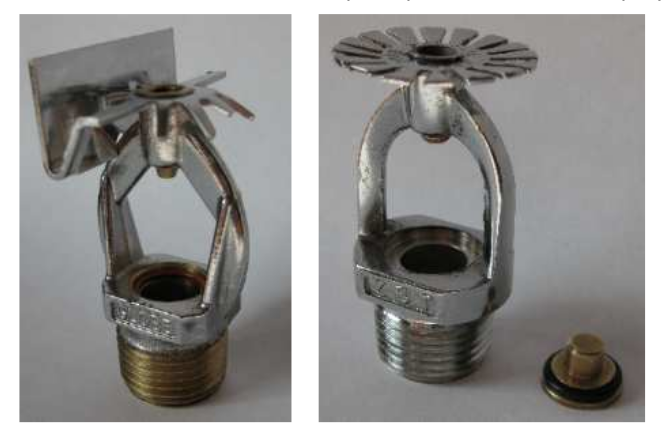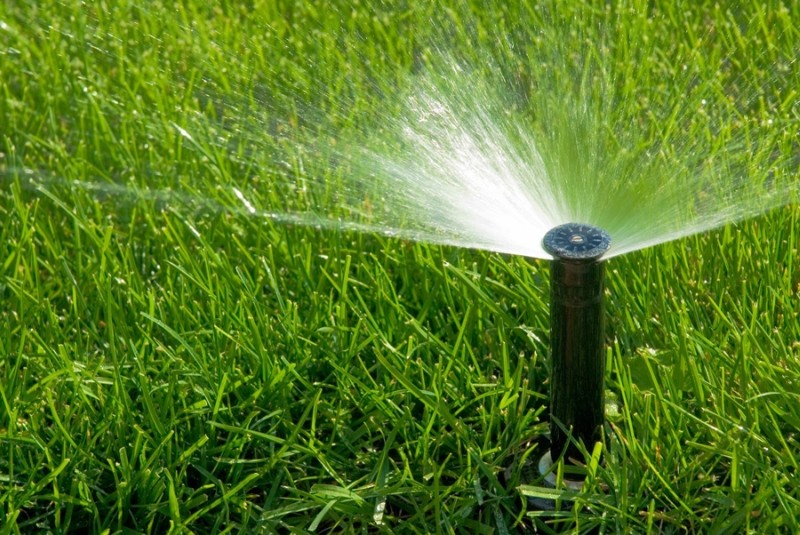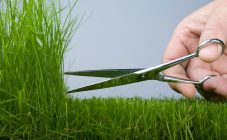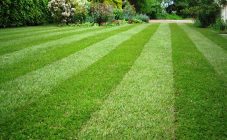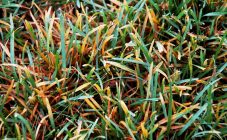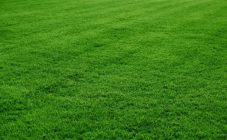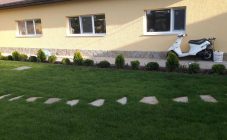Content:
The lawn is the perfect backdrop for placing flower beds, flower beds and various compositions. But for a soft carpet to look uniform, it must be properly cared for.
Basic lawn care
Lawn maintenance is easy. He needs:
- timely haircut;
- weed control;
- pest control;
- edge processing;
- timely scarification (combing);
- watering.
One of the most important parts of lawn care is watering. Without watering, you will not get a beautiful, even, bright grass cover, especially in dry summers. If there is little rainfall, ugly brown spots from burnt grass may appear on the lawn. To prevent this from happening, it is necessary to ensure constant soil moisture.
Watering happens:
- manual;
- semi-automatic;
- auto.
Automatic lawn irrigation system: advantages and types
Benefits:
- Saving time;
- Plants receive better hydration, in contrast to manual technology;
- Dry paths and benches. If the irrigation angle is set, then the water flows only where it is needed;
- The automatic lawn irrigation system does not spoil the appearance of the garden. Almost all of the components are hidden underground.
Types of auto-irrigation:
- Sprinkler;
- Drip.
Sprinkler type of autowatering is a distribution of pipes throughout the lawn, in the designated places on the surface, special sprinklers (sprinklers) are brought out. Watering is obtained as in the rain.
The drip type is flexible hoses with small holes laid along the site. Water is supplied without pressure. Such a structure can be placed both on the surface of the grass (which is not at all aesthetically pleasing) and underground. With underground irrigation technology, water flows directly to the plant roots. By using agrofibre it is possible to avoid contamination of the holes.
Sprinkler type autowatering
With this method, watering is uniform and the top layer is not washed out.
You will need special equipment for automatic watering of the lawn:
- Pumping station;
- Pipes;
- Sprinklers;
- Pressure regulators;
- Filters;
- Solenoid valves;
- Controllers;
- Connecting elements.
Sprinklers (sprinklers) are a device that sprinkles water in the form of drops. Sprinklers can be retractable and non-retractable. Retractable sprinklers are inoperative below ground level, so they are completely invisible. In turn, retractable irrigators are divided into rotary and fan. Rotary - this is a fixed base and a movable head with blades. Water hits the blades and is sprayed in a circle. And the fan automatic lawn sprinkler has no rotating parts.
In order to water the lawn more evenly, sprinklers with different spray radius are used. When connected, a separate pressure regulator is required for each sprinkler. The pumping station is installed next to a water accumulator, a well or a well. It must be equipped with a filter so that foreign objects and dirt do not contaminate the equipment.
Dividing the sprinklers into separate groups, which are turned on in turn, will reduce the required power of the pumping equipment. Sprinklers will be activated using solenoid valves controlled by the controller.
The control unit together with the controller is connected to the mains, a pumping station with solenoid valves is connected to it. The cables are laid in a metal pipe underground. The controller can be used to program the required watering. And in the future, the automation itself will cope with the given work.
The pipeline is a system of plastic pipes that are connected at different angles with connecting threaded fittings. The plastic is resistant to subzero temperatures and does not rot.
Since the depth of the trench is not great (it will freeze in winter), it is necessary to equip the system with drainage wells and valves for draining water.
The system can be equipped with special equipment for near-stem and drip irrigation of plants. In this case, a reducer must be installed to reduce the water pressure. A rain sensor installed in an open area and connected to the controller will prevent the structure from working in rainy weather.
Do-it-yourself automatic watering of the lawn
You can do autowatering yourself or buy a ready-made system. So, it was decided to install do-it-yourself automatic watering of the lawn on your site. Where to begin? Of course, from the plan and drawings. A detailed roadmap is the cornerstone. After all, one must take into account where and what equipment will be located, how much materials must be purchased.
On ordinary graph paper, it is necessary to mark those structures that will not move (buildings, existing trees), as well as mark those that are planned to be planted. It is also worth noting where the recreation areas, vegetable garden, orchard will be located.
In the ratio of the area of irrigation and the shape of the artificial meadow, you can calculate the required number of sprinklers, they will need to be applied to the diagram. Then it should be noted where the electrical panel will be located and the place of water supply (water supply, well, reservoir).
For the manufacture of water supply, PVC pipes with a diameter of 32 mm are used. The sprinkler is connected to the pipe using a cut-off nipple. The branches are regulated by valves, which in turn are combined into groups. Groups of valves are placed in special boxes, but no more than 4 pieces. To connect the valve to the pipe, it is placed in a special place and fixed with a sleeve.
Installation instructions
You can assemble the device for automatic irrigation of the lawn yourself (of course, we are talking about a summer cottage or a country house, and not about a public garden or park). Especially if the owner is familiar with plumbing and electrical work.
- Marking is applied according to the plan (if the system is carried out along an already broken lawn, then by pouring it with chalk, and if there is no grass cover yet, then you can mark it with pegs with stretched ropes).
- Digging trenches for water supply (depth 30-40 cm). At the end of each branch, you need to build a drainage well to drain the water.
- Connect the pipes with fittings.
- Install the manifold assembly with solenoid valves. All water pipes are connected to this node.
- Connect the pumping station.
- Connect the entire system. Connect the water supply wire, the pumping station and the collector using a purification filter.
- Carry out a test run of the system and check the tightness.
- Install the sprinklers and check the installation again.
- All pipes are covered with soil (if the laying took place on the finished lawn, then the removed sod is laid).
- Install and connect weather sensors to the system.
If you are not confident in your abilities and skills, it is better to entrust the work to professionals. It will be more expensive and much more troublesome to remodel a low-quality automatic irrigation system.
